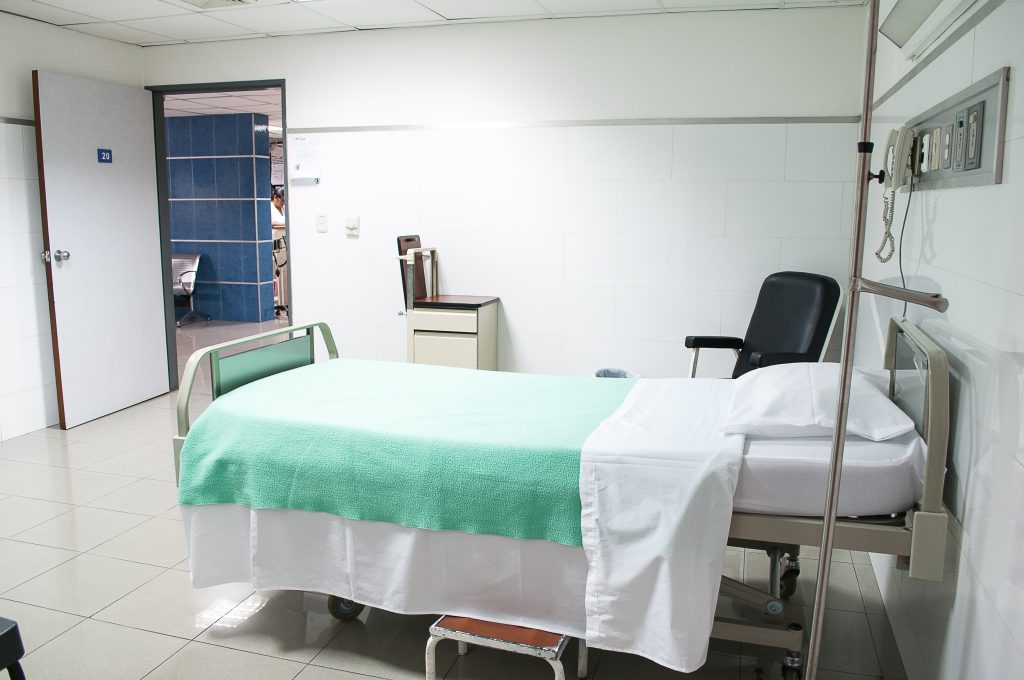Are you ready for an exciting adventure? Get ready to hop on your bike and join the world of kids biking for fun! Whether you’re a beginner or a seasoned rider, this article will take you on a thrilling journey through the joys of biking. From feeling the wind in your hair to exploring new places, biking is not only a great way to stay active but also a fantastic way to have fun with friends and family. So grab your helmet, put on your biggest smile, and let’s hit the road together!

Benefits of Kids Biking
Physical Fitness
Kids biking provides numerous benefits to their physical fitness. riding a bike is an excellent form of exercise that gets their hearts pumping and muscles working. It helps improve cardiovascular health, strengthens leg muscles, and enhances overall stamina. Regular biking can also help kids maintain a healthy weight and reduce the risk of obesity. Moreover, it is a great way for children to engage in a physical activity that is enjoyable and fulfilling.
Mental Health
Apart from the physical benefits, kids biking also promotes mental well-being. Riding a bike outdoors allows children to soak up the sun, breathe in fresh air, and connect with nature. This can have a positive impact on their mood and mental health. Biking is an excellent stress-reliever and can help children take their minds off any worries or anxieties they may be experiencing. It promotes a sense of freedom, independence, and happiness, contributing to their overall mental well-being.
Social Interaction
Kids biking also encourages social interaction. When children ride their bikes together, they have the opportunity to engage with their peers, develop friendships, and bond with others who share the same interest. Biking in groups or with family members allows children to learn valuable social skills such as communication, cooperation, and teamwork. It provides them with opportunities to have fun, build relationships, and create lasting memories.
Motor Skill Development
Biking helps in the development of essential motor skills in kids. Riding a bike requires the coordination of various body parts, including hands, eyes, and feet. It helps children enhance their balance, agility, and coordination. Through pedaling, steering, and maneuvering, kids learn to control their movements and develop fine motor skills. These motor skills are not only important for biking but also transferable to other physical activities and daily tasks.
Choosing the Right Bike
Age and Size Appropriate
When choosing a bike for kids, it is crucial to ensure that it is age and size appropriate. Bikes come in different sizes, and it is important to select a bike that allows the child to touch the ground with their feet while seated on the saddle. An appropriately sized bike ensures comfort, control, and stability for the child, reducing the risk of accidents and enhancing their overall biking experience.
Bike Features
Consider the features of the bike when making a selection. Look for bikes with sturdy frames, reliable brakes, and proper gearing suitable for the child’s age and skill level. The bike should have an adjustable seat to accommodate growth and handlebars at a comfortable height. Additionally, accessories such as fenders, lights, and bells may be considered based on personal preference and riding conditions.
Safety Equipment
Along with the bike, it is essential to invest in appropriate safety equipment for kids. The most crucial piece of safety equipment is a well-fitted helmet. Ensure that the helmet meets safety standards and covers the forehead without hindering visibility. Knee and elbow pads can provide extra protection, especially for beginner riders. Reflective clothing and bike lights are also important for enhancing visibility, especially when riding during dusk or in low-light conditions.
Preparing for a Bike Ride
Checking the Bike
Before setting off on a bike ride, it is important to check the bike for any mechanical issues. Ensure that the tires are properly inflated, the brakes are working effectively, and the chain is well lubricated. Check that the saddle and handlebars are securely tightened and that no loose parts or accessories pose a safety hazard. Regular bike maintenance and inspections will ensure a smoother and safer ride for kids.
Safety Check
Apart from the bike itself, conducting a safety check for the surroundings is crucial. Assess the route and identify any potential hazards or obstacles that may pose risks to the child’s safety. Look for any broken glass, potholes, or uneven surfaces that may require special attention while riding. It is important to ensure that the chosen route is suitable for the child’s age and skill level, avoiding busy roads or areas with heavy traffic.
Dressing Appropriately
Proper attire is essential for a comfortable and safe biking experience. Kids should wear closed-toe shoes with a firm grip to prevent slipping off the pedals. Loose clothing or long shoelaces should be avoided to prevent entanglement with the bike’s moving parts. Dressing in layers ensures adaptability to changing weather conditions, and wearing bright colors enhances visibility, making it easier for others to spot the child on the road.
Choosing Suitable Bike Routes
Neighborhood Routes
Neighborhood routes are an ideal starting point for kids to begin their biking adventures. These routes usually consist of quiet streets with minimal traffic, providing a safe environment for children to enjoy their rides. Riding around the neighborhood allows kids to become familiar with their surroundings, improving their confidence, and providing opportunities for social interactions with other children in the area.
Parks and Trails
Parks and trails are excellent options for biking with kids, offering scenic landscapes and a chance to connect with nature. These areas often have designated bike paths or trails specifically designed for biking, away from vehicle traffic. Riding in parks and trails provides a sense of exploration and adventure, keeping kids engaged and excited about biking. It also offers a safe and controlled environment where kids can practice their biking skills without worrying about oncoming vehicles.
Bike Paths
Bike paths, also known as greenways or cycling lanes, are dedicated lanes for biking, separate from motor vehicle traffic. These paths are typically well-maintained and clearly marked, providing a safe and enjoyable biking experience for kids. Bike paths can be found in various urban areas, parks, and recreational facilities. Riding on bike paths allows children to experience longer rides and explore different areas, while still ensuring their safety and minimizing the risk of accidents.

Fun Activities to Do While Biking
Scavenger Hunt
Organizing a bike scavenger hunt can add excitement and entertainment to kids’ biking experiences. Create a list of items or landmarks for children to find while riding their bikes. These can include specific objects, natural features, or even historical sites. As they ride around, children can check off the items they find, turning their bike ride into a fun and interactive game.
Obstacle Course
Setting up an obstacle course in a safe and controlled area provides an opportunity for kids to develop their biking skills while having fun. Use cones, chalk, or other materials to create a course with various challenges such as tight turns, slaloms, and small jumps. Encourage kids to navigate through the course, improving their balance, maneuverability, and confidence on their bikes.
Bike Parade
Organizing a bike parade brings together the joy of biking and the spirit of community. Encourage kids to decorate their bikes with streamers, balloons, and other creative items. Choose a route within the neighborhood and let the kids ride together in a procession. Participating in a bike parade fosters a sense of camaraderie and allows children to showcase their creativity while enjoying the benefits of biking.
Biking Safety Rules for Kids
Wearing a Helmet
Wearing a helmet is the most crucial safety rule for kids biking. A properly fitted helmet dramatically reduces the risk of head injuries in case of falls or collisions. Teach children the importance of wearing a helmet every time they ride their bikes and make sure they understand how to properly adjust and fasten it. Encourage them to be good role models by consistently wearing their helmets and explaining the significance to their friends and peers.
Obeying Traffic Laws
Instilling a respect for traffic laws at an early age is vital for kids’ safety while biking. Teach children to follow traffic rules, including stopping at stop signs, riding on the right side of the road, and yielding to pedestrians. Explain the meaning of traffic signals and signs, and help them understand the importance of being mindful of others on the road. Practicing proper road etiquette ensures a safe and harmonious biking experience for everyone.
Using Hand Signals
Teaching kids how to use hand signals is an effective way to communicate their intentions to other road users. Hand signals, such as extending an arm to indicate turning left or right, help drivers and pedestrians understand the intended direction of the cyclist. Reinforce the importance of using hand signals consistently and correctly, so that others can anticipate the child’s movements and take appropriate actions to ensure safety.

Learning Bike Safety Skills
Balance and Coordination
Starting with the basics, kids should learn how to balance and coordinate their movements while riding a bike. Balance bikes or bikes with training wheels can be helpful for young children who are just beginning to learn how to ride. Gradually, children can transition to a bike without training wheels, allowing them to develop balance and coordination skills. Practice activities such as riding slowly in a straight line, making gentle turns, and maneuvering around obstacles can help kids improve their balance and coordination.
Turning and Braking
Teaching children how to turn and brake properly is essential for their safety on the road. Begin by explaining the concept of leaning into turns and demonstrating the correct hand positions on the handlebars. Teach them to use both the front and rear brakes, emphasizing the importance of using them in coordination to avoid skidding or losing control. Provide opportunities for kids to practice turning and braking in a safe and controlled environment until they develop confidence in these skills.
Riding in a Group
Riding in a group is an enjoyable experience for kids, but it also comes with its own set of challenges. Teach children how to ride in a group safely, maintaining proper spacing, and communicating with other riders. Demonstrate techniques such as riding single file or side by side when appropriate. Explain the importance of looking out for fellow riders, signaling intentions, and staying alert to potential hazards. By teaching kids how to ride in a group, you help foster a sense of community and cooperation while ensuring their safety.
Teaching Kids Bike Maintenance
Cleaning the Bike
teaching kids how to clean their bikes is an important aspect of bike maintenance. Explain to them the importance of keeping their bikes clean, as dirt and debris can interfere with the bike’s performance. Guide them on using appropriate cleaning materials and techniques, such as using mild soap and water or bike-specific cleaning products. Show them how to clean the frame, tires, and other parts of the bike, emphasizing the importance of regular cleaning and maintenance.
Checking Tire Pressure
Checking tire pressure regularly is crucial for a smooth and safe biking experience. Teach kids how to use a tire gauge to measure the tire pressure and ensure it meets the recommended levels. Explain the importance of proper tire inflation, as underinflated tires can make biking harder and increase the risk of flats, while overinflated tires can lead to reduced traction and control. Encourage kids to regularly check and inflate their tires, instilling good habits for bike maintenance.
Basic Repairs
Teaching kids basic bike repairs empowers them to address minor issues on their own. Show them how to fix a flat tire using a patch kit or replace an inner tube. Guide them on how to adjust the brakes and gears, explaining the purpose and function of each component. By providing kids with the knowledge and skills to handle basic repairs, you equip them with confidence and independence, ensuring they can address potential problems while on their biking adventures.

Benefits of Bike Helmet Use
Protection against Head Injuries
The most significant benefit of bike helmet use is the protection it provides against head injuries. Helmets are designed to absorb impact and reduce the force exerted on the skull and brain during a fall or collision. Wearing a helmet can prevent or minimize the severity of head injuries, including concussions and skull fractures. By consistently wearing a helmet, kids can engage in biking activities with peace of mind, knowing that they have taken proactive steps to protect themselves.
Visibility and Identification
Bike helmets also enhance visibility and identification on the road. Helmets with bright colors or reflective elements are more noticeable to motorists and pedestrians, reducing the risk of accidents caused by lack of visibility. Additionally, helmets can serve as a means of identification. In the event of an accident or emergency, helmets can provide vital information such as contact details or medical conditions, ensuring that the child receives appropriate assistance.
Role Modeling
Encouraging kids to wear helmets while biking serves as an excellent example for their peers and younger children. By consistently wearing a helmet, kids can inspire others to do the same and promote a culture of safety within their community. Being a positive role model showcases the importance of prioritizing safety and encourages others to adopt responsible biking habits. Helmet use can become a norm when children understand its significance and see it as a positive and cool accessory.
Encouraging Bike Safety in the Community
Safety Education Programs
Safety education programs play a crucial role in promoting bike safety within the community. Collaborate with local schools, community centers, or biking organizations to organize workshops or events focused on bike safety. These programs can include interactive activities, discussions on road safety, and hands-on training sessions. By actively engaging children and their families in safety education programs, the community can foster a safety-conscious biking culture.
Improving Bike Infrastructure
Advocating for improved bike infrastructure is essential for creating a safe biking environment within the community. Work with local authorities or advocacy groups to raise awareness about the need for bike lanes, traffic calming measures, and bike-friendly infrastructure. Encourage the development and maintenance of bike paths, bike racks, and safe biking routes that cater to children and families. Improved bike infrastructure contributes to safer and more accessible biking opportunities for all.
Organizing Bike Events
Organizing bike events can help bring the community together while promoting bike safety. Plan community bike rides, bike races, or bike rodeos that engage children and families in fun and interactive activities centered on bike safety. These events can include helmet fittings, bike inspections, and safety demonstrations. By fostering a sense of community and creating opportunities for bike safety discussions, communities can reinforce the importance of safe biking practices and inspire a greater commitment to bike safety.
In conclusion, kids biking offers numerous benefits ranging from physical fitness and mental health to social interaction and motor skill development. By choosing the right bike, preparing adequately, and selecting suitable bike routes, children can enjoy biking in a safe and enjoyable manner. Engaging in fun activities while biking, following biking safety rules, and learning bike safety skills further enhance their overall biking experience. Teaching children bike maintenance and promoting bike helmet use contribute to their safety and the safety of the entire community. Through encouraging bike safety education and advocating for improved bike infrastructure, communities can create a biking culture focused on safety and well-being. By embracing the joys of biking while prioritizing safety, kids can embark on exciting biking adventures that provide lifelong benefits.



